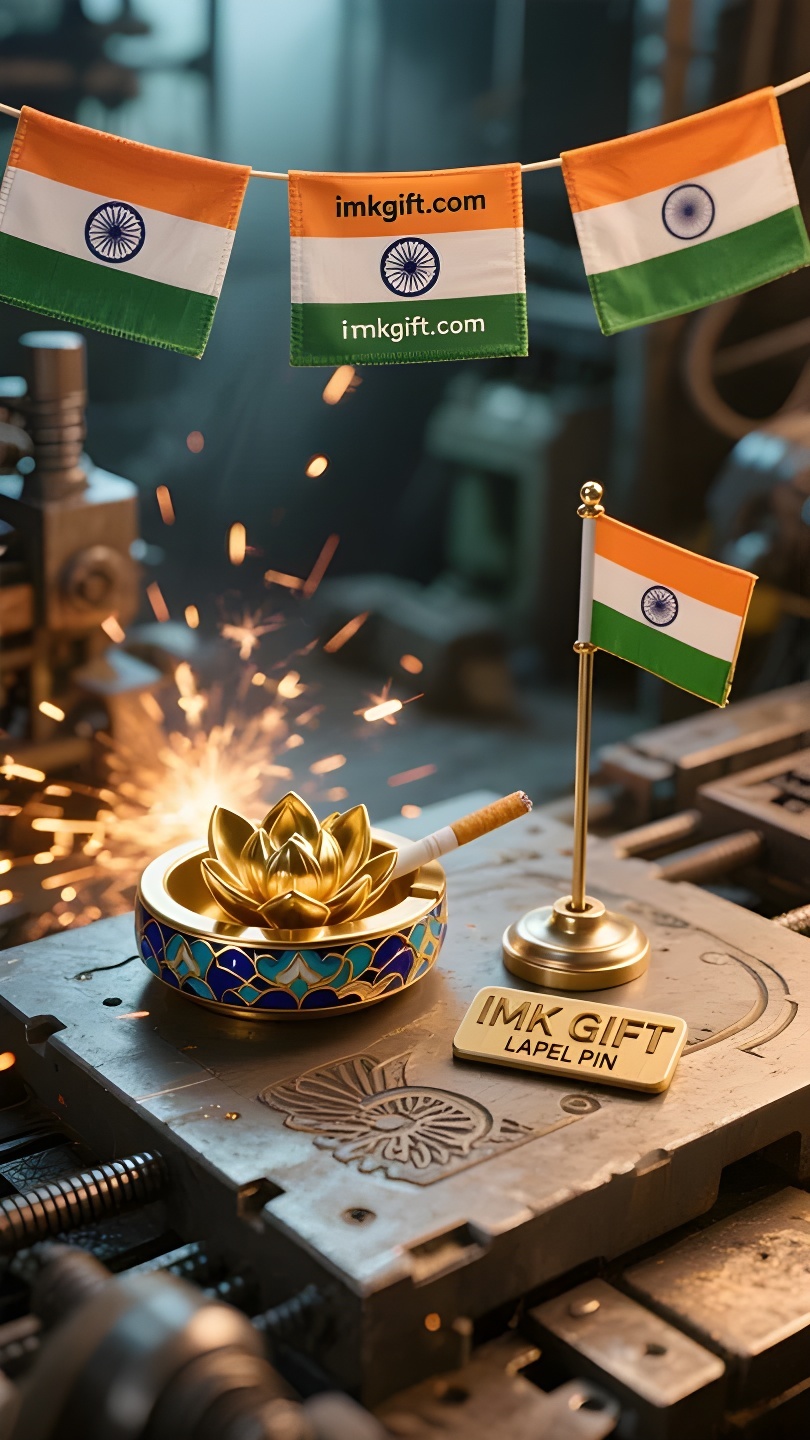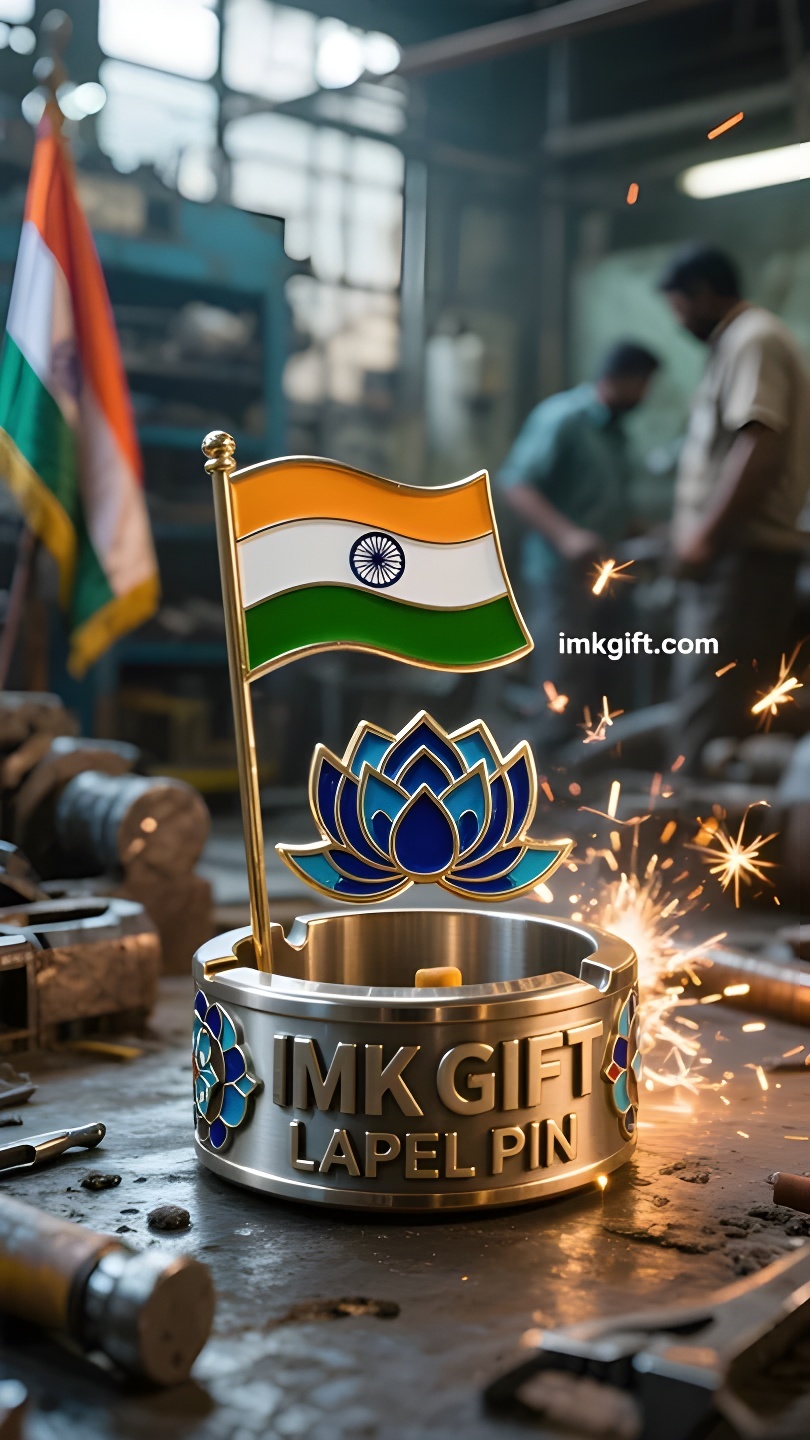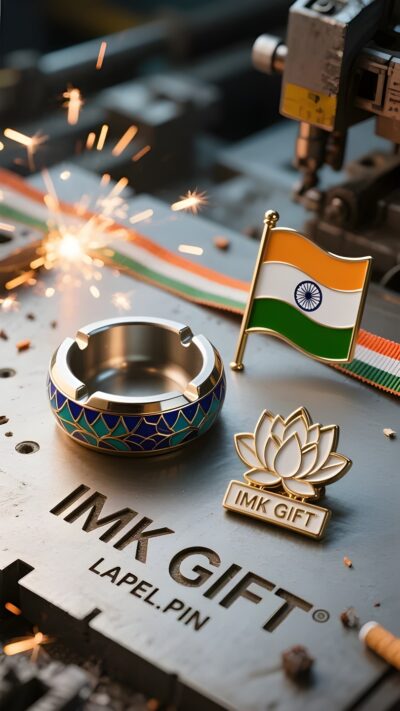in989-र-ख-स-ख-लत-ह-र-ष-ट-र-य-भ-वन
▼
भारत के स्वतंत्रता दिवस की धूम में, नारंगी, सफेद और हरे रंग का तिरंगा झंडा और बीच में गहरे नीले रंग का धर्म चक्र एक दूसरे के पूरक हैं, ठीक उसी तरह जैसे इस प्राचीन सभ्यता का जीवन चक्र पर दार्शनिक व्याख्या है। मेज पर रखी कमल की ऐशट्रे इस प्राच्य ज्ञान को अधिक सरल तरीके से व्याख्यायित करती है – यहां राख और पुनर्जन्म का पवित्र मिलन होता है। अस्थियों को कमल के आकार के चीनी मिट्टी के बर्तन में रखा गया है, ठीक भारतीय ध्वज पर मौजूद सदाबहार नीले कमल की तरह। हिंदू धर्मग्रंथ “ऋग्वेद” में बहुत पहले ही बताया गया है: “कमल कीचड़ में उगता है, लेकिन उस पर कोई दाग नहीं लगता, जैसे बुद्धिमान व्यक्ति संसार में रहते हुए भी उससे विरक्त रहता है।” जब राख झाड़ी के बीच में गिरती है, तो वह फेंका हुआ अवशेष नहीं रह जाती, बल्कि उपजाऊ मिट्टी में परिवर्तित हो जाती है जो नए जीवन को पोषित करती है। यह मुझे महात्मा गांधी की यह उक्ति याद दिलाता है: “सच्ची शक्ति पीड़ा को जागृति की नींव में ढालने में निहित है।” आधुनिक भारत में युवा उद्यमी अपने कार्यों से इस रूपक को सिद्ध कर रहे हैं। बैंगलोर के टेक पार्कों में, इंजीनियर असफल परियोजनाओं की राख को विघटनकारी एल्गोरिदम में पुनः जोड़ते हैं; गुजरात की कपड़ा कार्यशालाओं में महिलाएं कपड़ों के टुकड़ों से फैशनेबल कलाकृतियां बुनती हैं। जिस प्रकार ऐशट्रे में धूल का प्रत्येक कण पुनर्जन्म का संकेत देता है, उसी प्रकार यह देश अपनी ऐतिहासिक विरासत को नवीन गति में परिवर्तित कर रहा है। जैसे ही डूबते हुए सूरज ने तिरंगे झंडे को सुनहरा कर दिया, ऐशट्रे में कमल का आकार स्पष्ट हो गया। यह हमें याद दिलाता है कि सबसे चमकदार प्रकाश अक्सर सबसे गहरी जलन से पैदा होता है। राख से जो उभरता है वह न केवल निर्वाण का फीनिक्स है, बल्कि एक राष्ट्र का कभी न ख़त्म होने वाला आध्यात्मिक प्रतीक भी है।
In the afterglow of India’s Independence Day, the orange, white and green colors of the tricolor flag and the dark blue Dharma wheel in the center complement each other, just like the philosophical annotation of this ancient civilization on the cycle of life. The lotus ashtray on the desk interprets this oriental wisdom in a more simple way – ashes and rebirth meet here in a sacred way. The lotus-shaped ceramic vessel holds the ashes, just like the blue lotus on the Indian flag that never fades. The Hindu scripture “Rig Veda” has long revealed: “The lotus grows in the mud but remains unstained, just as the wise man is in the secular world but transcends.” When the ash falls into the heart of the ash, it is no longer a discarded residue, but is transformed into fertile soil that nourishes new life. This reminds people of Mahatma Gandhi’s motto: “True power lies in forging suffering into the cornerstone of awakening.” Modern young entrepreneurs in India are confirming this metaphor with their actions. In Bangalore’s technology park, engineers reorganize the “ashes” of failed projects into disruptive algorithms; in Gujarat’s textile workshops, women workers weave scraps into fashionable works of art. Just as every speck of dust in an ashtray contains the code for rebirth, this country is transforming historical sedimentation into innovative momentum. As the setting sun gilds the tricolor flag, the lotus silhouette in the ashtray becomes clearer. It reminds us that the brightest light is often born from the deepest burning. What rises from the ashes is not only the phoenix of Nirvana, but also the spiritual totem of a nation that never stops.
在印度独立日余晖中,三色旗的橙、白、绿与中央的深蓝法轮交相辉映,恰似这个古老文明对生命轮回的哲学注解。而案头的莲花烟灰缸,正以更质朴的方式诠释着这份东方智慧——灰烬与新生在此处完成神圣交汇。
莲蓬造型的陶瓷器皿盛着余烬,恰如印度国旗上那朵永不凋零的蓝色莲花。印度教典籍《梨俱吠陀》早有启示:”莲花生于淤泥而不染,正如智者身处世俗而超脱。”当烟灰落入蓬心,它不再是废弃的残渣,而是转化为滋养新生的沃土。这让人想起圣雄甘地的箴言:”真正的力量,在于将苦难锻造成觉醒的基石。”
现代印度的年轻创业者们,正在用行动印证这个隐喻。在班加罗尔的科技园区,工程师将失败项目的”灰烬”重组为颠覆性算法;在古吉拉特的纺织作坊,女工把边角料编织成时尚艺术品。正如烟灰缸里每粒尘埃都蕴藏着重生密码,这个国度正将历史沉淀转化为创新动能。
当夕阳为三色旗镀上金边,烟灰缸中的莲花剪影愈发清晰。它提醒我们:最璀璨的光芒,往往诞生于最深的灼烧。从灰烬中站起的,不仅是涅槃的凤凰,更是一个民族永不停歇的精神图腾。
▼
Contact Us
📞 Tel: +0086-760-85286839
📧 Email: sales3@imkgift.com








